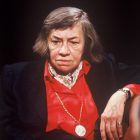Episodia 1.3: The Heart Is a Lonely Zombie
I never thought I’d say this, but I love me some zombies. Allow me to count the ways: their appetite for live flesh, their disintegrating jowls, their nobody’s-home-stares. Luckily for me, we just might be living in the age of the zombie renaissance. The undead have been pop culture icons ever since the 1968 horror flick Night of the Living Dead, and with the recent publication of Colson Whitehead’s Zone One and the hit television adaptation of Robert Kirkman’s graphic novel The Walking Dead, zombies have gone literary, too.
What can we writers learn from the art of the undead? Almost every episode of “The Walking Dead” highlights a skill that writers must master, and that’s the power of silence. There’s much to learn from how the show uses silence as a technique, not only as a foil for the zombie figure, but the types of silence that a zombie apocalypse imparts to those who manage to survive it.
Even though every creative writing class you’ve ever taken has insisted that dialogue is a must, I have a secret to tell you. Sometimes people just don’t talk. Sure, dialogue is useful when a scene demands it. It denotes action, feeling, and tension. But silence can signify all of those, too, when it’s executed properly. Here’s the key: silence is not the same thing as the absence of dialogue, which the opening scene of “The Walking Dead” pilot episode demonstrates. It plays out like this:
A police car travels down a quiet, tree-lined road. When the car stops, a man wearing a Sheriff’s Deputy uniform steps out. We see that he’s holding a gas can. There is no wind or sound as the man walks toward the camera. After he passes overturned vehicles, pup tents, discarded laundry, and dirty stuffed animals, we start to sense not only that something terrible has occurred, but that people fled—or disappeared—without time enough to take anything with them. When the man, Officer Rick Grimes, sees a spray-painted sign that says, “No Gas,” he hears a sound. He bends down and spies slippered feet shuffling along, and then he stands up to find the back of a little girl’s head as she shambles away. More than three and a half minutes pass before the first lines of dialogue are finally spoken:
“Little girl, little girl.”
I won’t spoil the rest.
This is such a gutsy opener because the television medium largely relies on soundtracks to indicate how an audience should feel. But the silence in those first four minutes is a deft multi-tasker. It sets mood, scene, tension, and even suggests backstory. Any kind of dialogue that attempted to do all that in three minutes would feel weighty and forced. The silence here isn’t just intriguing. It’s economic.
But what about in print? How can we hear silence in the pages we read and write? That sent me searching for stories and chapters without dialogue, and I hit the jackpot with one of my favorites, The Heart is a Lonely Hunter by Carson McCullers. There’s only one line of dialogue in the entire first chapter (“None of your business”), and it’s tucked so neatly into a paragraph that your eyes don’t quite recognize what it is. What we do recognize, however, is the silence.
The novel’s protagonist is a mute named John Singer, and throughout the opening pages, the silence shape-shifts and provides the narrative arc. The story begins with this: “In the town there were two mutes, and they were always together,” and “every morning the two friends walked silently together until they reached the main street of the town.” Here, the silence connotes companionship. But when Singer’s friend Antonapoulos becomes ill and is sent away, he wanders “through the streets of the town, always silent and alone.” The silence that was once a communion turns solitary, setting the stage for the rest of the plot to unfold.
Silence doesn’t always have to be a solo-act, however. In fact, it often works best in tandem with dialogue. What’s in or behind the pauses we write? The silence surrounding lines of dialogue can hit just as hard as the words themselves. Let’s return to John Singer for a moment, who used to speak with his mouth before meeting his friend Antonapoulos. Though he was deaf, Singer learned to read lips, but he couldn’t get used to speaking with them. Once he met Antonapoulos, he could finally communicate with another person using his hands instead of his mouth:
“Since that time he had never spoken with his mouth again, because with his friend there was no need for this.”
McCullers makes us feel the friction when Singer must speak with his mouth as well as the relief when he doesn’t, and we understand that the silence that separates him from the rest of the world is the same silence that seals his most valued friendship.
Perhaps, then, the most fruitful silences bear meaning for the act of communication itself. In a flashback scene in the middle of the first episode of “The Walking Dead,” we watch Officer Rick as he struggles to tell his best friend and partner Shane about the estrangement between him and his wife.
“The least you could do is speak,” Shane says.
“That’s what she always says,” Rick answers. “’Speak, speak.’”
This exchange is one of my favorite moments in the entire series because we see the intimate problem of silence before the onset of the crisis, and then we witness how it becomes newly complicated after the crisis sets in. This is authentic to life as we know it—the moments we try to speak and fail, and the moments we speak when we ought to listen.
Silence is never just silence in the hands of a skilled writer. Silence is romance. Silence is violence. Silence is strife. Silence is fear. How will you write it?



